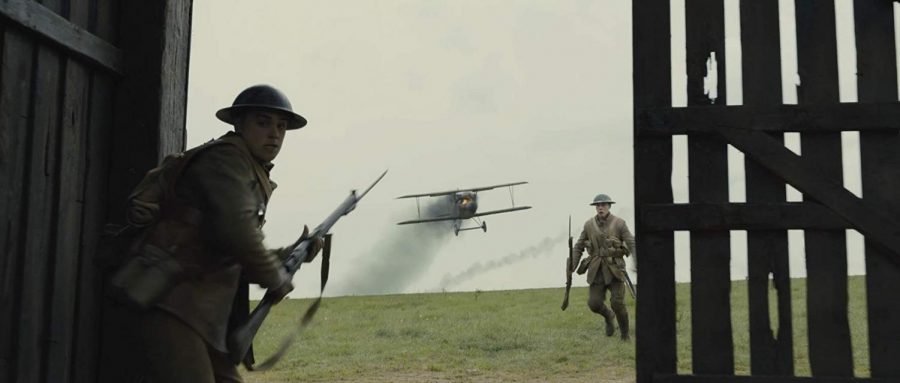When it comes to awards season, war movies tend to do generally well. There’s something patriotic about watching one’s nation fight against evil. It’s as basic as it gets. Over the course of cinematic history, war movies have remained a constant. The first Best Picture winner in 1928 went to a war movie, “Wings.” Since then films like “The English Patient,” “Braveheart,” “The Deer Hunter” and “The Hurt Locker” have all walked away with the Best Picture Oscar. This year, director Sam Mendes is hoping to repeat history with his World War I spectacle, “1917.”
“1917” follows two young British soldiers, Corporal Blake (Dean-Charles Chapman) and Corporal Schofield (George MacKay) during the first world war, who are instantly assigned with a monumental task: to find another unit who will unknowingly walk into a trap that will end in a massacre the next day. The two young soldiers will have to cross enemy lines protected only by the guns on their backs. Corporal Blake’s older brother is in that very squad and with his immense knowledge of maps and geography, only he and Corporal Schofield can get there in time to save the 1,600 men.
Instead of a traditional feature narrative, “1917” relies on the technical elements of the film to drive it forward instead of a narrative story. Both actors are fantastic in their roles and MacKay deserves to be in the Best Actor conversation this awards season, but what makes this film stand out is all the technical aspects of the film, the people who in a normal feature, simply never take center stage.
For starters, the film is edited to seem as if it was all one shot. There are no cuts or jumps from location to location. Editor Lee Smith and cinematographer Roger Deakins’ collaboration results in the film being shot in the first-person point of view so the audience feels like the third man on the mission. There is no time to breathe or make an unneeded movement, much like a video-game experience, but with no time to pause. The audience feels like they are in just as much danger as these boys are, and the need to get the message to the troop to stop the battle feels just as important as it does to the characters. This effect also provides the effect that the enemy isn’t just the German troops, but time itself. Every second walking or overcoming obstacles is a second closer to the battle where Blake’s brother and 1,600 other British soldiers will most likely meet their end.
Deakins once again proves that he is the best cinematographer working in Hollywood. The Oscar winner was able to conjure up some of the most incredible imagery that film has seen this year. His shadows are dark and his real-life transitions from light to night and back to morning is a work of genius. Through his camera he shows his audience the horrors of war and how alien it is. In one scene, it is the battlefield that every audience member has seen before, but in the next it is something straight out of a horror movie. The characters are hurt, hungry, out of ammunition and terrified. But so is the audience; they are just as terrified as the characters that are experiencing every obstacle along the way.
But even with all the amazing acting, production and camera work, this film wouldn’t be as effective without Thomas Newman’s score. Newman, who earned his fifteenth nomination with “1917” (though he has yet to win), is responsible for any emotion the audience feels throughout the film. All the anxiety, pride, fear, sadness, hate and hope is a direct response to his music. Everything on screen on a technical level is excellent, but Newman’s score brings it up to fantastic. Once the music kicks in, the audience knows that they are witnessing something special.
“1917” isn’t like most war movies. Even though there is a general plot, the narrative level of the film, which is usually a film’s strongest element, is flat and surface level. What saves and then catapults this basic story into the stratosphere of “cinema” is everything around that story: the direction, editing, cinematography, production design, score, sound and costumes. One sees this film for all of those technical elements and more, not the story. On Jan. 13, “1917” was nominated for 10 Oscars, including Best Picture. Only time will tell if it joins the ranks of “The Hurt Locker” and “Wings,” but if one thing is for sure it is that “1917” isn’t just a film, it is an experience.
Lauren LaMagna can be reached at [email protected].




















